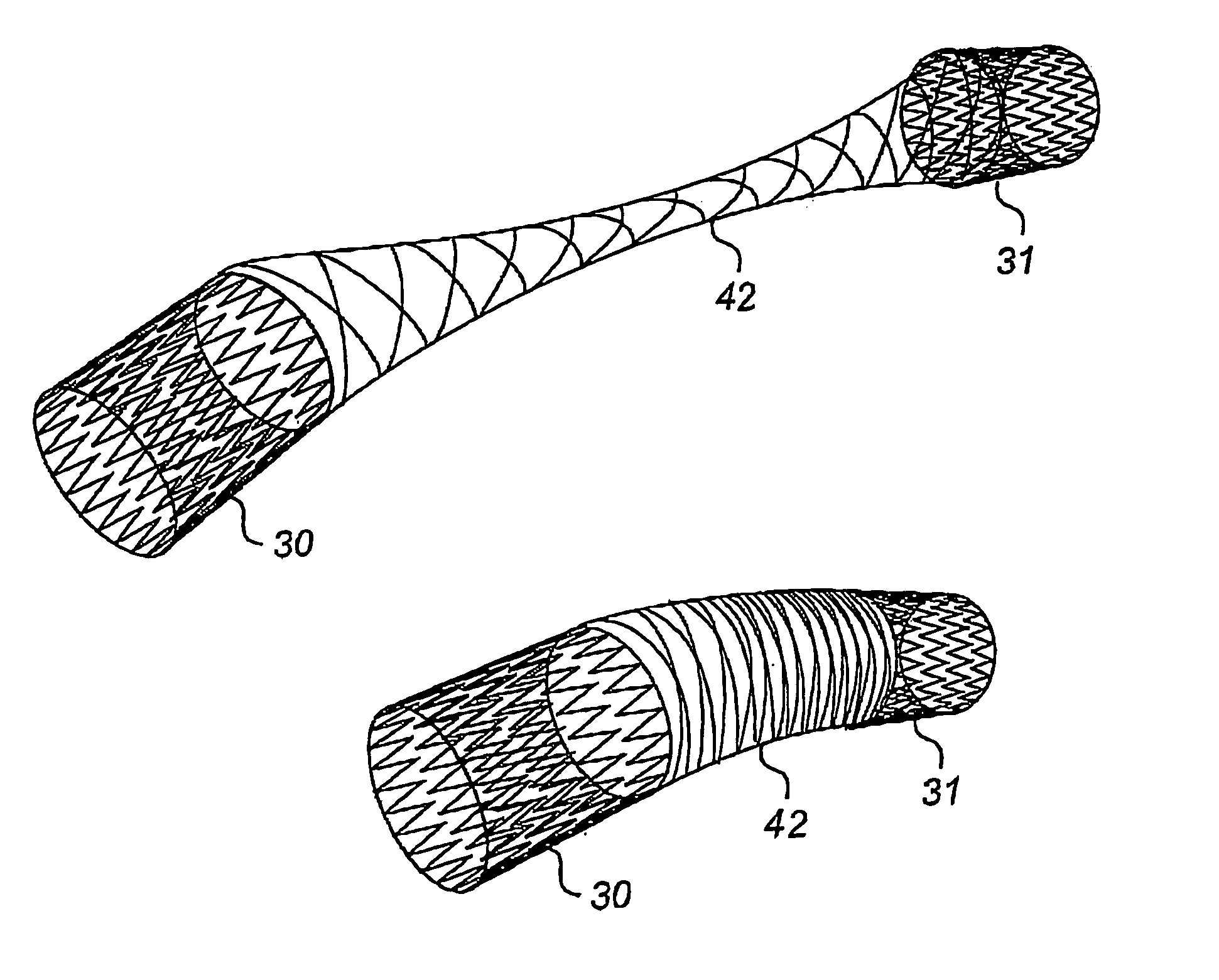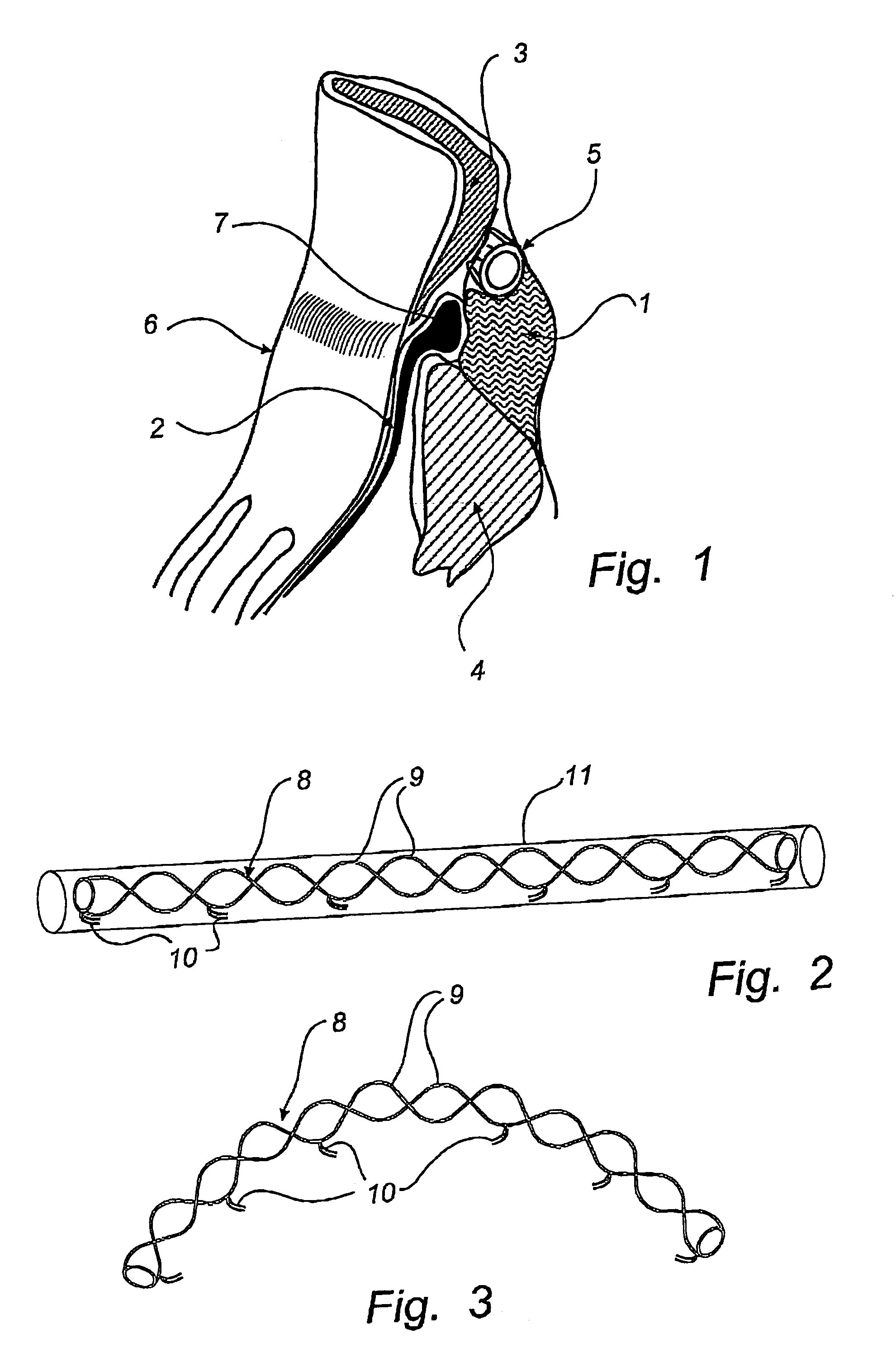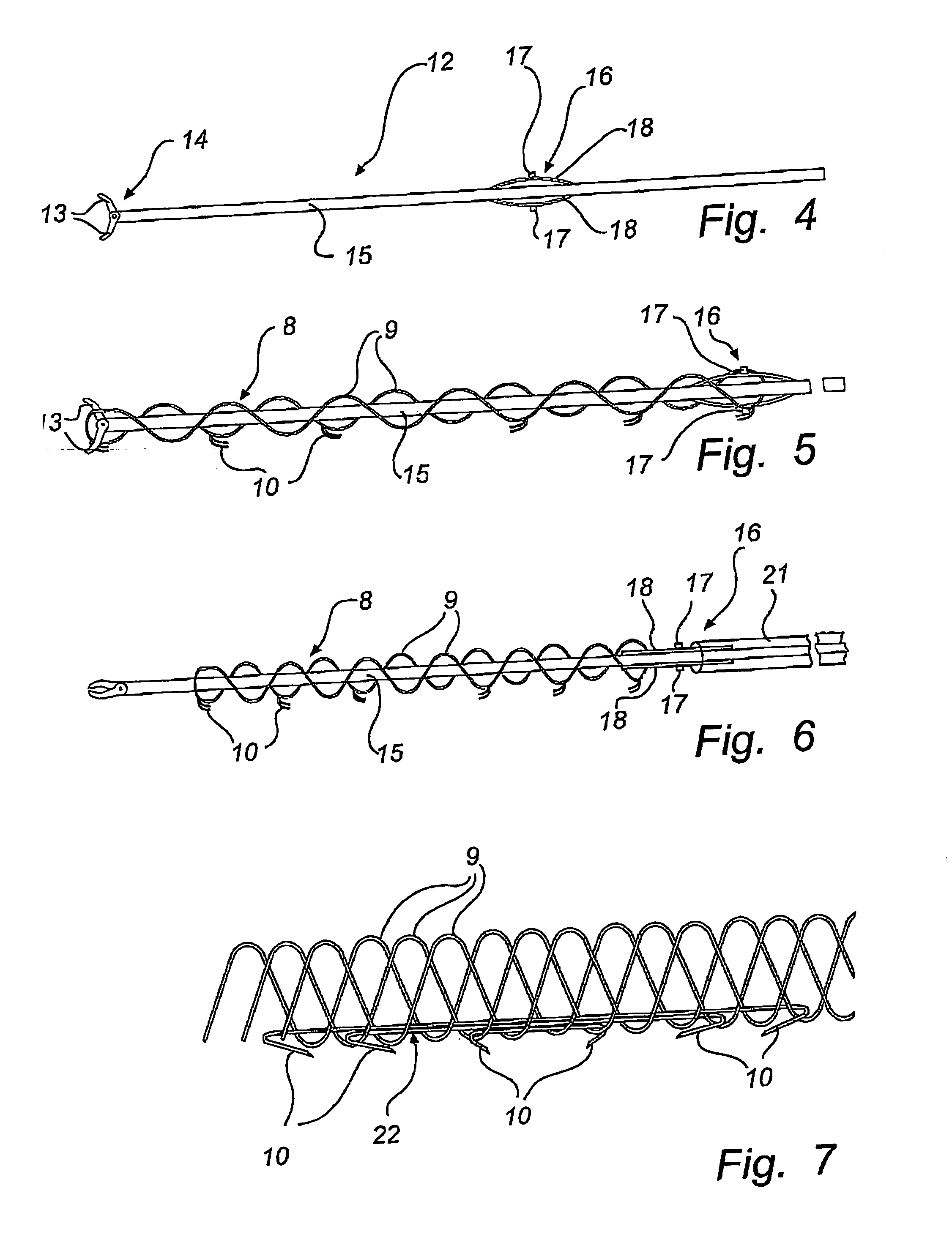Method and device for treatment of mitral insufficiency
a technology of mitral insufficiency and device, which is applied in the field of devices and methods for treating mitral insufficiency, can solve the problems of reducing the durability of biological prostheses, creating insufficiency, and affecting the function of the mitral insufficiency, so as to reduce the distance between the proximal and distal stent sections , the effect of substantial length reduction
- Summary
- Abstract
- Description
- Claims
- Application Information
AI Technical Summary
Benefits of technology
Problems solved by technology
Method used
Image
Examples
Embodiment Construction
[0043]FIG. 1 is a cross-sectional view through the heart area of the posterior atrioventricular groove 1, which is filled with fatty tissue. It shows the posterior leaflet 2 of the mitral valve and the adjoining parts 3, 4 of the atrial myocardium and the ventricular myocardium. The coronary sinus 5 is shown close to the mitral annulus 6 and behind the attachment 7 of the posterior leaflet 2. Since the coronary sinus 5 substantially encircles the mitral annulus 6, a reduction of the radius of curvature of the bent coronary sinus 5 also will result in a diameter and circumference reduction of the mitral annulus 6.
[0044]The device of FIG. 2 comprises an elongate body 8 made of memory metal, e.g. Nitinol, or other similar material which has a memory of an original shape, illustrated in FIG. 3, and can be temporary forced into another shape, illustrated in FIG. 2. This elongate body 8 comprises one, two or more memory metal strings 9 of helical or other shape so as to fit together and b...
PUM
 Login to View More
Login to View More Abstract
Description
Claims
Application Information
 Login to View More
Login to View More - R&D
- Intellectual Property
- Life Sciences
- Materials
- Tech Scout
- Unparalleled Data Quality
- Higher Quality Content
- 60% Fewer Hallucinations
Browse by: Latest US Patents, China's latest patents, Technical Efficacy Thesaurus, Application Domain, Technology Topic, Popular Technical Reports.
© 2025 PatSnap. All rights reserved.Legal|Privacy policy|Modern Slavery Act Transparency Statement|Sitemap|About US| Contact US: help@patsnap.com



